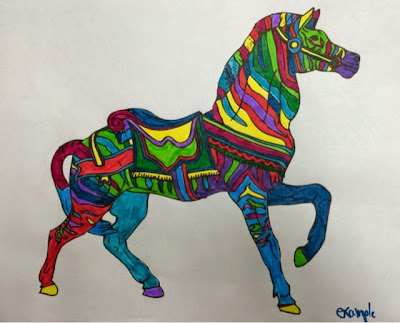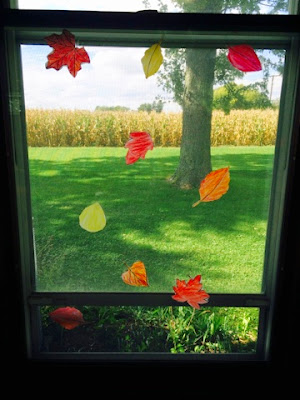The Battle of the Five Armies (an unoffical review)
I went to see "BotFA" with my niece and one of my brothers on December 16. 10:00PM showing. The closest we could get find to a midnight premiere. :) We found ourselves the only 3 people in the theater. While it was a tad bit disappointing since we went with "premier" expectations, it allowed me personal outbursts without fear of annoying anyone.
Later I went to see it with some family and a friend. This time there were more people in the theater and I forgot that we weren't alone. My friend and I were asked to be quiet. My embarrassment was deeply felt. Still, I was able to view the movie with a far less emotional mindset and found that I enjoyed it even more than the first time I watched it.
Overall: BotFA was a mixture of gorgeous visual splendor, too much CGI (computer generated imagery), corny moments, epic moments, and scenes that forced you to applaud.
The soundtrack is lovely. Howard Shore never fails to bring forth new and beautiful things. Notable tracks include: The Last Goodbye, Ironfoot, Courage and Wisdom.
*WARNING: Here there be spoilers!
*
*
*
Pros:
One of the most intriguing scenes involved The White Council (Gandalf, Galadriel, Elrond, Radagast, and Saruman) battling Sauron at Dol Goldur. I loved seeing them all display their power. In "Lord of the Rings" we see them as the wise and reserved guardians they are. It was exciting to see a different side to their characters. One word though to keep in mind when watching: Galadriel. I will never see that elven queen the same way ever again.
Smaug was a visual treat. Vivid and well handled by the film crew. The costumes, particularly the armor, were rich and culturally fascinating. There's a sense of detail and depth applied to all of the landscapes, cities, and dwarven halls.
Richard Armitage and Martin Freeman. Their characters stood out to me the most.
Richard Armitage portrays the madness of Thorin painfully well. His death scene made me cry for the first time in a theater. I can count on one hand the number of movies I've cried for.
The change in our protagonist, Bilbo Baggins (Freeman), is moving and thoughtful. Towards the end you can see Bilbo Baggins: Elf-Friend; of the Company of Thorin Oakenshield; praised amongst men and dwarves; pondering the hobbit he used to be. Is he really the same quaint hobbit who cared more about his handkerchief and mother's doilies? No, no he's not. He's seen some of his very closest friends die, he's seen monsters, elves, and a shape shifting bear man. How can he possibly continue on with his life that used to be the only thing he cared for or knew of?
The end of BotFA gave a strong nod to the ending of the "Lord of the Rings: The Return of the King." How do you pick up the threads of an old life? I won't say exactly how the movie ends. It was perfect and made me want to go watch the entire "Lord of the Rings" trilogy all over again.
It's fitting that they had Billy Boyd sing the ending credits song. "The Last Goodbye" is similar to "Into the West" but stands out by itself with no trouble. *whisper* I'm actually listening to it on repeat right now as I type this post.
 |
| source: Pinterest |
Cons:
-Tauriel
-Legolas
I would end the cons list there but that's not fair.
Most every scene I disagreed with involved those two in some way.
The almost love triangle we had going on with TaurielxLegolasxKili was disappointing to see. This is Middle-Earth. It's a world that I had hoped to see untainted by romantic sub plots. Of course we have Aragorn and Arwen in the Lord of the Rings. But that was far subtler love story, it worked as a main plot support, but it wasn't a romance.
I'm one of the strange peoples (considering I'm a hard core book fan) who actually likes Kili and Tauriel's might-have-been relationship. What I dislike about it is how they handled it. More could have been conveyed in a glance than in a sappy dialogue exchange.
There are similar feelings surrounding Legolas. There's a bridge scene that is downright NOT possible. I understand he's an elven warrior, but I couldn't take that scene seriously. In some of the scenes where he interacted with Tauriel or his father it felt a little too much like watching a teenager rebelling. I understand this is a younger Legolas than we see in "Lord of the Rings," but it doesn't reflect the spirit of Tolkien's writing and younger Legolas is still old by the standards of men.
I'm less upset about the inclusion of the characters of Legolas and Tauriel than I am about how they handled them.
Alfrid. Also known as Grima Wormtongue Jr. Why did we have yet another irksome character when we could've shared more screen time with the dwarves?
*
End Spoilers
*
"The Battle of the Five Armies" was difficult to watch as a book fan. But I still loved it and look forward to seeing it again as soon as it comes out on DVD.
It may have been disappointing in some places, but it made me cry. Whatever Peter Jackson puts his mind to, will undeniably come out amazing. What he does well isn't just good, it's perfect.
Thank you Peter Jackson for the memories you have given us. I wish you well in your future endeavors.
-Tauriel
-Legolas
I would end the cons list there but that's not fair.
Most every scene I disagreed with involved those two in some way.
The almost love triangle we had going on with TaurielxLegolasxKili was disappointing to see. This is Middle-Earth. It's a world that I had hoped to see untainted by romantic sub plots. Of course we have Aragorn and Arwen in the Lord of the Rings. But that was far subtler love story, it worked as a main plot support, but it wasn't a romance.
I'm one of the strange peoples (considering I'm a hard core book fan) who actually likes Kili and Tauriel's might-have-been relationship. What I dislike about it is how they handled it. More could have been conveyed in a glance than in a sappy dialogue exchange.
There are similar feelings surrounding Legolas. There's a bridge scene that is downright NOT possible. I understand he's an elven warrior, but I couldn't take that scene seriously. In some of the scenes where he interacted with Tauriel or his father it felt a little too much like watching a teenager rebelling. I understand this is a younger Legolas than we see in "Lord of the Rings," but it doesn't reflect the spirit of Tolkien's writing and younger Legolas is still old by the standards of men.
I'm less upset about the inclusion of the characters of Legolas and Tauriel than I am about how they handled them.
Alfrid. Also known as Grima Wormtongue Jr. Why did we have yet another irksome character when we could've shared more screen time with the dwarves?
*
End Spoilers
*
"The Battle of the Five Armies" was difficult to watch as a book fan. But I still loved it and look forward to seeing it again as soon as it comes out on DVD.
It may have been disappointing in some places, but it made me cry. Whatever Peter Jackson puts his mind to, will undeniably come out amazing. What he does well isn't just good, it's perfect.
Thank you Peter Jackson for the memories you have given us. I wish you well in your future endeavors.
| source: tumblr |
*I do not own the extended edition of the soundtrack. As a result any extra tracks can not be taken into account in my selections.
Related blog post:























































